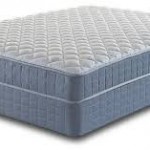How to Plan for the Cost of that Remodeling Job

Begin the job by measuring the precise size of the room. Make a scale drawing of what the room looks like now. Using the same outline of the room, begin to make the planned changes on a new drawing. If walls are being moved, the drawing should include all other affected rooms in the house. Care should be taken at this point to make sure that no interior or exterior support walls are being changed without proper engineering adjustments to compensate for the support that might possibly be lost.
Once the drawing of the final outcome is completed, it is time to start to determine what will be removed and replaced or changed in the remodel. If it is a major project, the list can become quite long. It is important to plan for hidden costs like rotted boards or failing pipes. Most of the time when you tear into an old home, things that were not broken before will break now. Using a wrench to loosen a drain pipe can cause the whole pipe to just disintegrate.
When any type of plumbing or electric routes will be encountered, budget for replacing those as part of the project. If it proves unnecessary, no one ever complains when the cost is less. Items you will need to look to include in the budget are things like drywall, carpet or floor covering, paint, nails, wire, tubing and pipes, etc. Anything that will be moved or removed, will need to be rebuilt or replaced. Add it all into the budget.
Some labor cost will need to be in the budget. You may believe that you can do it all by yourself, but most projects eventually either need a professional or extra pairs of hands that may have to be compensated with money. I recommend that on do-it-yourself project that you include about 25% above the material costs for labor.
Call one store with your list and get the prices for all of your supplies. If you have to buy additional tools, put them into the budget. Use the list as a guide to do some shopping. Keep a list of what you need and what store has it at what price.
When the looking is finished, go back to the stores that had the best materials for the best prices and buy your materials. For budgeting purposes, use the first numbers and add about 20% on for waste. Since you will likely save some money over the first list, this will give you a little extra room for the unexpected in your budget.
The final budget with tools included will be about 1 1/2 to 2 times the first materials cost list that you made. Do not let this scare you, this is about normal. This is your budget. You may be able to get the job finished for less, but this will let you know if financially you should even start it.
If you are planning to contract the entire job, you will be given estimates from 2 to 4 contractors. Go look at their work and ask former clients about how quickly they completed the jobs and how close to budget. Factor this information into your decision about which contractor to use. Always add about 25% to the contractor’s estimate to cover any project changes that you make along the way.



